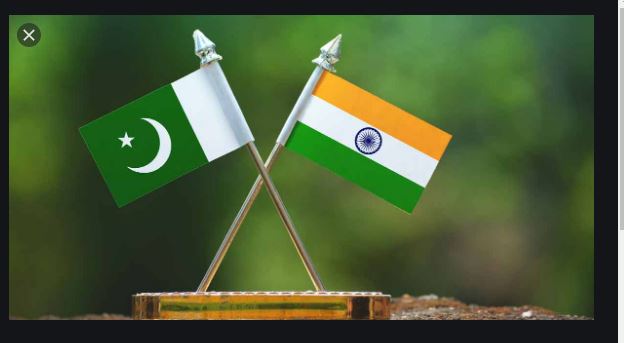Sohail Khan
Terming India’s gaze towards Pakistan as ‘perpetuated grandiosity’, in article titled ‘Shattered Myth’ (Pakistan Today, 29 Mar 19), I observed that India unyielding disparages Pakistan’s name while shying away from accepting or even acknowledging its own failures. Overshadowing and belittling Pakistan’s peaceful moves, ceaselessly, remains the top Indian politico-military agenda.
No wonder Indian politicians and military men conveniently anchor their strategy on anti-Pakistan rhetoric, which they believe is the best form of personal and professional survival and growth. Indian military and politicians cumulatively attempt to distort Pakistan’s positive image to hide behind obvious diplomatic and military setbacks, through convolution of fact and fiction; this is what I call the ‘perception inversion’, though it’s been a long-held cornerstone of Indian strategic community. Of late, Pakistan Navy becomes the latest target of such Indian paranoia.
In anarticle published in the online news portal Daijiworld, on 3 Nov 20, MrSumit Kumar Singh, conspicuously leans on the traditional ‘perception inversion’ while being economical with truth. He slanderously accuses Pakistan Navy of pursuing a “hollow and almost complacent” strategy while referring to PNS Zulfiquar’sparticipation in the Turkish MaviBalina exercise. Throughout his piece, Mr Singh refers to a nameless ‘intelligence officer’ and builds his arguments in an analytical vacuum devoid of a rationally or academically acceptable substance. While repeatedly arguing that what PN Ships Moawin and Aslat had done during the Africa Cruise, in 2019, was a “dishonorable use of the armed forces”, Mr Singh blatantly fails to reflect what Ken Booth posits the diplomatic role of the navies.
Pakistan Navy routinely operates with other navies in the region through bi- and multilateral maritime exercises. It has been leading the two Combined Task Forces, instituted under the US initiative of Combined Maritime Forces, since 2004. Pakistan Navy has been steadily enhancing its operational outreach since the mid-90s and now its ships are seen at various seas and ports of call, outmaneuvering India’s strategic maritime wit. This has not been taken by the Indian strategic community with ease, and the apparent frustration in Mr Singh’s calumniouspiece is the reflection of a typical tunneled Indian mindset that principally draws its strength from hate and malice.
Pakistan’s current Naval Chief, Admiral Niazi, while being commander of the naval fleet, clarified to the gathering of Exercise Aman, last year that Pakistan Navy believed in enhancing maritime peace and stability through consistent, proactive and forward looking engagement. The Admiral even suggested Pakistan Navy’s willingness to work with other navies through the construct, what Robert Kaplan refers to as, ‘plug and play’ mechanism. He argued for a ‘win-win’ approach steering clear of bilateral bickering in order to have safer seas for uninterrupted flow and growth of maritime commerce signifying Geoffrey Till’s assertion of maritime security to be ‘quintessentially cooperative’.
Mr Singh switches back and forth in his claims and assertions to link one thing with other, which are diametrically unrelated. Beginning with ‘naval deployments’, he steps down to Kargil War then brings in the FATF Grey List and then alleges Pakistan to rely on Chinese loans for its defence spending. Such a train of incoherent arguments suggests the deep rooted obsession with Pakistan, which turns even a logical debate into an emotional diatribe leaving a reader in an inconclusive situation. Mr Singh substantially relies on ‘perception inversion’ as he failingly links Pakistan with terror forgetting Kalbhushan Yadav, the Indian terrorist on a death roll here in Pakistan. One needs to read Elias Davidsson’s opus ‘the Betrayal of India’ (2017) to truly understand the tyranny of justice in India in matters of terrorism. The Babri Masjid’s highly biased Hindu-leaning decision and rampant growth of Hindutva-centric culture in Indian general populace are the signs clear enough to tell who’s going where; something which RanaAyub and Arundhati Roy have been expounding in their writings for a long time.
Detection of Indian submarines on two occasions, as these were attempting to sneak into Pakistan’s coastal waters, and shooting down of two Indian jets leading to ‘tea is fantastic’ episode dispels the notion of Indian military being competent and responsible. Post-Pulwama, Indian vessels remained holed up in Oman, to avoid being followed or harassed, as Pakistan Navy ships patrolled the North Arabian Sea. Series of Indian submarine accidents and Indian navy’s inability to deploy its carriers ‘at the right time, at the right place’, are what I term the ‘desperation stimuli’, which often result in publishing of such notes as the one in Daijiworld.
As to what this Daijiworld piece suggests, Pakistan Navy has longtime deep military relations with the Gulf countries since 1960-70s in specific areas of professional training, military education and maritime exercises. Pakistan Navy’s 27 Oct 20’s successful live weapons firing establishes its professional credence and gives an ambiguous message to its friends and allies for keeping the long term partnerships, in professional military cooperation, alive and growing.Pakistan Navy’s long term plans include induction of numerous frigates, corvettes, submarines and jet maritime surveillance aircraft. As of last two years, Pakistan ships visited as far as Gulf of Finland to West Africa coast thereby negating the groundless claim of Daijiworld’s article of “limited capabilities”. Indian strategic community needs to unshackle itself from the delirium of superiority complex and argue for modulation of efforts to make the seas surrounding South Asia as safer, reliable and free for economic and scientific activities.
















